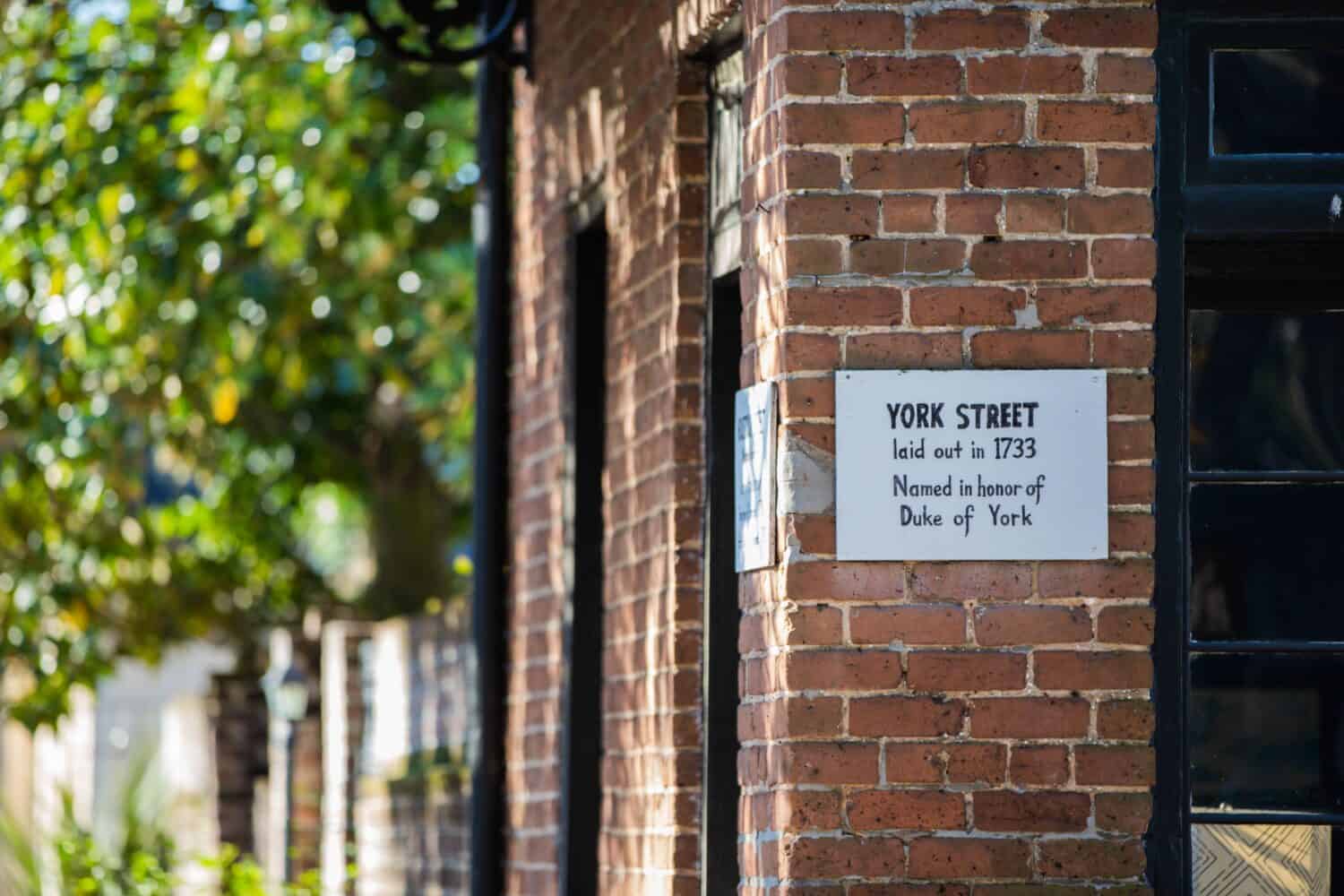New York, the city that never sleeps, is widely recognized as a vibrant and bustling metropolis. Known as the most populous city in the United States, it is affectionately referred to by many as NYC. But how did this iconic city get its name? Continue reading to uncover the fascinating history behind the beloved Big Apple.
Origins

In New York City real estate holdings are measured in square feet owned.
©IM_photo/Shutterstock.com
Overall, New York City’s name reflects its complex history and the many cultures that have shaped it over the centuries. Originally called New Amsterdam, New York City was renamed in 1664 when it was taken over by the English. It was named for the Duke of York. Previously, the area was occupied by the Lenape people, who called it “Lenapehoking,” meaning “land of the Lenape.” The city’s Dutch origins can still be seen. For example, Harlem comes from “Haarlem” in the Netherlands.
Who Was the Duke of York and Why Was the City Named After Him?

This street sign marks a brick building on the famous York Street.
©Wirestock Creators/Shutterstock.com
The Duke of York was James, Duke of York, who later became King James II of England. James II was the brother of King Charles II, who granted him land, including the New Amsterdam colony. This colony was seized from the Dutch in 1664. The city was renamed New York in his honor.
The Duke of York is a title that has been held by several members of the British Royal Family. These include Prince Andrew, the second son of Queen Elizabeth II. Prince Andrew was born on February 19, 1960, at Buckingham Palace in London. He served in the Royal Navy for many years, rising to the rank of Commander before retiring in 2001. He is known for his extensive charitable work and patronage of various organizations.
What Other Places or Things Are Named After the Duke of York?
Some organizations named after the Duke of York include schools and hospitals. Locations also carry the name, including places in the United States. York County in Pennsylvania is an example. Additionally, Aurora, Illinois, also has some institutions named after the Duke of York.
What Was the Significance of the Lenape Tribe in the History of New York?

The U.S. gold dollar coin features “Treaty with the Delawares”
©Frank L Junior/Shutterstock.com
The Native American Lenape tribe, also known as “the Delawares”, inhabited the territory of present-day Delaware, New York, parts of New Jersey, Pennsylvania, and Maryland. The Delawares called themselves Lenape, which means “The People.” They were a member of the Algonquian language family and related to the Miami, Ottawa, and Shawnee tribes.
Their encounters with the Dutch, who arrived in the 17th century, were significant in New York City’s history. Peter Stuyvesant, the Dutch Governor of New York, established the town of New Amsterdam on Lenape land in 1655. The Lenape were later forced to leave their homeland due to colonial expansion. They were known for their friendliness to William Penn, the founder of Pennsylvania. Penn rewarded them with the infamous Walking Purchase Treaty.
The Treaty with the Delawares was an important agreement signed between the United States and the Delaware Nation in 1778. The purpose of the treaty was to establish peaceful relations between the two groups and to allow American troops to pass through Delaware territory. The treaty allowed the Delawares to form a territory that could become a 14th U.S. state. It also established a relationship of goodwill and the exchange of gifts and goods. The treaty set a precedent for future treaties with Native American groups. It also helped to establish a foundation of peaceful relations between the U.S. and Native American nations.
How Did the Lenape Tribe Interact with the Dutch and English Settlers In New York?
The Lenape tribe interacted with the Dutch and English settlers in New York in different ways. Initially, Dutch traders had little interest in Native land. However, this changed once the Dutch West India Company was created in 1621.
Dutch Governor Peter Stuyvesant led an invasion capturing Swedish settlements and establishing the town of New Amsterdam on Lenape land in 1655. This led to the displacement of the Lenape people.
Members of the Lenni-Lenape clans who lived in New Netherland interacted with the Dutch colonists. There were also conflicts between the Lenape and English settlers, with violence breaking out at times.
Today, there are efforts to recognize and celebrate the Lenape tribe’s history and culture in New York City.
In Conclusion
In conclusion, the origin and meaning of New York’s name is a fascinating part of American history. Named after the Duke of York, who eventually became King James II of England, the city is deeply rooted in European colonialism. While the displacement of the indigenous Lenape tribe is a controversial aspect of NYC history, recognizing the city’s origins can provide a deeper understanding of how it became the great city it is today. By exploring the origins of New York’s name, we can gain a greater appreciation for the city and its rich cultural heritage.
The photo featured at the top of this post is © LG Collection/Shutterstock.com
Thank you for reading! Have some feedback for us? Contact the AZ Animals editorial team.






